
I made this tasty soup recently, the recipe is from a Guardian feature where you cook a large quantity of a particular ingredient, in this case butter beans, and use it for four different meals. You could easily use tinned butter beans if you prefer.
Serves 4
Preparation time: 10 minutes
Cooking time: 30 minutes
Ingredients
1 Tbsp olive oil
500 g leeks, trimmed and sliced
500 g cooked butter beans
1.5 litres water
2 Tbsp Marigold bouillon powder
A small handful fresh parsley, roughly chopped
Method
Heat the olive oil in a large saucepan, add the leeks, stir, then cover and cook gently for 5-10 minutes. Add the beans and the water, then bring to the boil. Sprinkle the bouillon powder over the surface, stirring to disperse it, then leave to simmer for about 20 minutes, until the leeks are tender. Add the fresh parsley, and blend the soup lightly with a hand blender to just thicken it slightly, but leave some visible pieces of bean and chunks of leek. Check the seasoning and serve.
http://www.theguardian.com/lifeandstyle/2016/jan/23/butter-beans-recipe-curry-soup-salad-pate
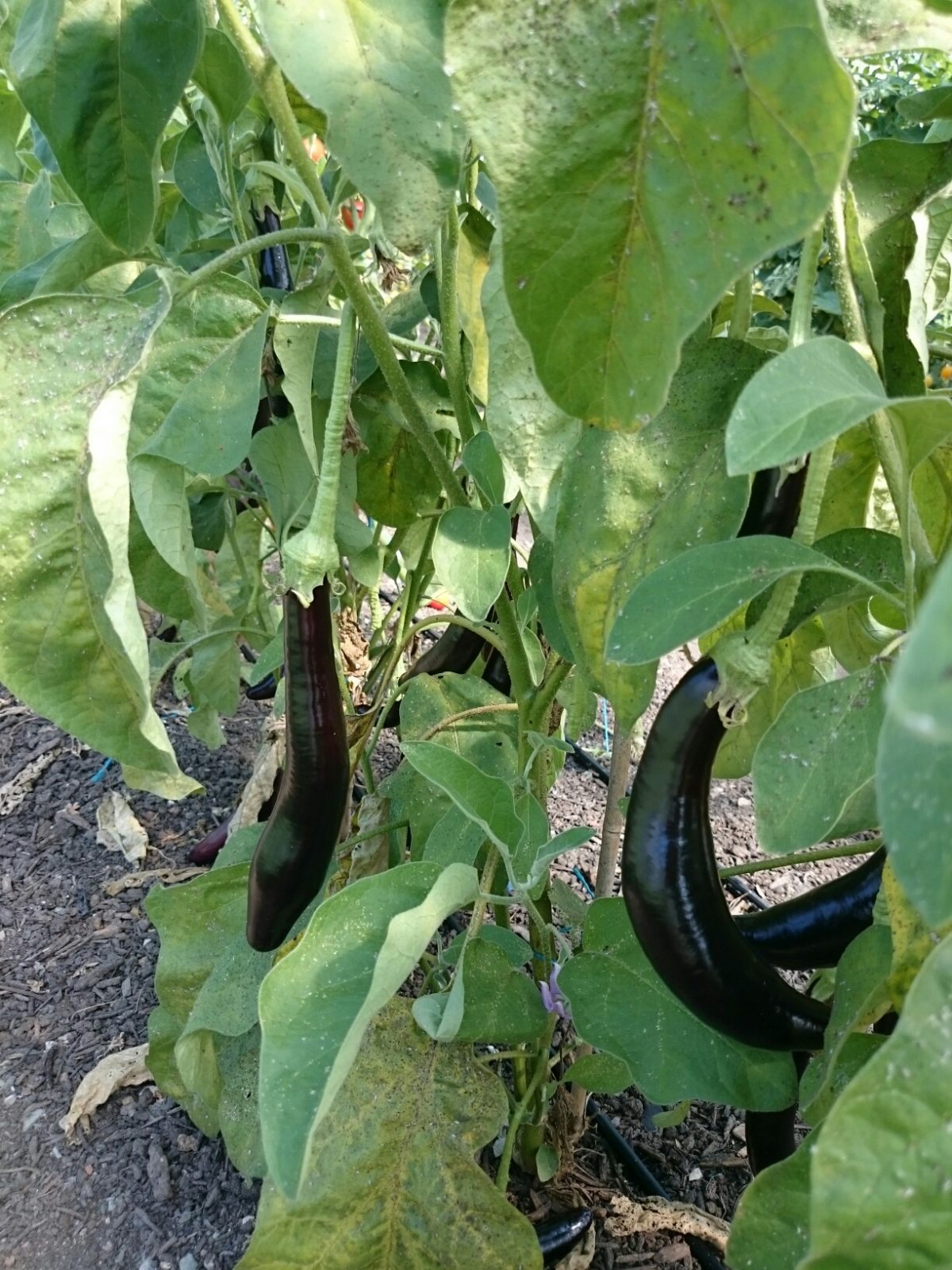
This recipe is taken from Felicity Cloake’s How to Cook the Perfect column in the Guardian. Every week she takes a familiar dish and tries several different recipes before coming up with her definitive recipe to make the perfect dish, in this case the perfect moussaka. We will be trying this on Sunday.
Serves 4
Preparation and cooking time: 1 hour 45 minutes
Ingredients
4 tbsp olive oil
3 medium or 2 large aubergines, sliced
1 large onion, finely chopped
4 cloves of garlic, finely chopped
1.5 tsp cinnamon
1 tsp dried oregano
500g minced lamb
2 tbsp tomato purée, mixed with 150ml water
150ml red wine
Small bunch of flat-leaf parsley, chopped
For the béchamel:
500ml milk
60g butter
60g plain flour
50g kefalotyri or pecorino cheese, grated
2 eggs, beaten
Nutmeg, to grate
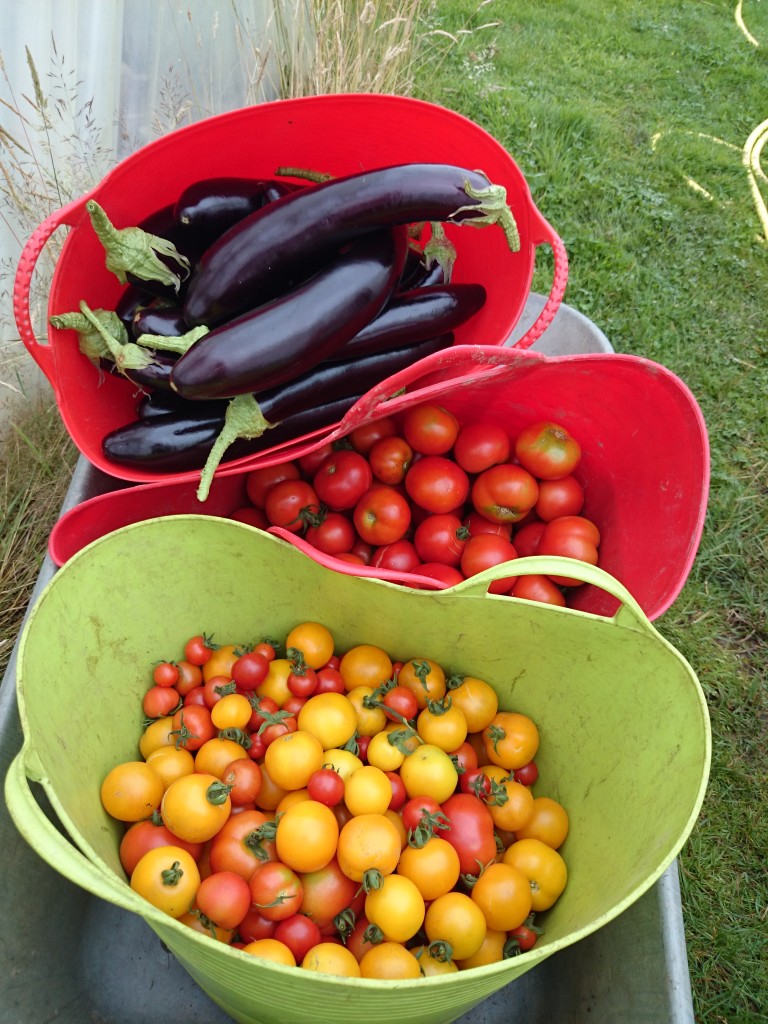
Method
Pre-heat the oven to 180C. Cut the aubergines lengthways into 0.5cm slices, and put them on to oiled baking sheets. Brush with olive oil and season. Bake for about 25 minutes until soft, golden and floppy.
Meanwhile, put 2 tbsp olive oil into a large frying pan over a medium high heat and cook the onion until soft. Add the garlic, cinnamon and oregano and cook for a further couple of minutes, then stir in the lamb. Turn up the heat slightly, and brown the lamb well, cooking until the mixture is quite dry. Stir in the tomato and wine, bring to a simmer, then turn the heat down low and cook for 30–40 minutes until most of the liquid has evaporated. Season and stir in the parsley.
While the meat is cooking, make the bechamel. Bring the milk to just below boiling point, and melt the butter in another saucepan. Stir the flour into the butter and cook for a couple of minutes, then gradually whisk in the hot milk. Cook until you have a thick sauce, then stir in the cheese until melted. Take off the heat and allow to cool slightly, then beat in the eggs, salt to taste and add slightly more nutmeg than you might think wise (it’s a strong flavour, but you need a heft of it in this dish I think – half a teaspoon at least).
Arrange a third of the aubergines in the base of an oven dish, and top with half the meat. Repeat these layers, then finish off with a layer of aubergine, and top with the sauce. Bake for about 45 minutes until well browned, and then leave to cool for half an hour before serving.
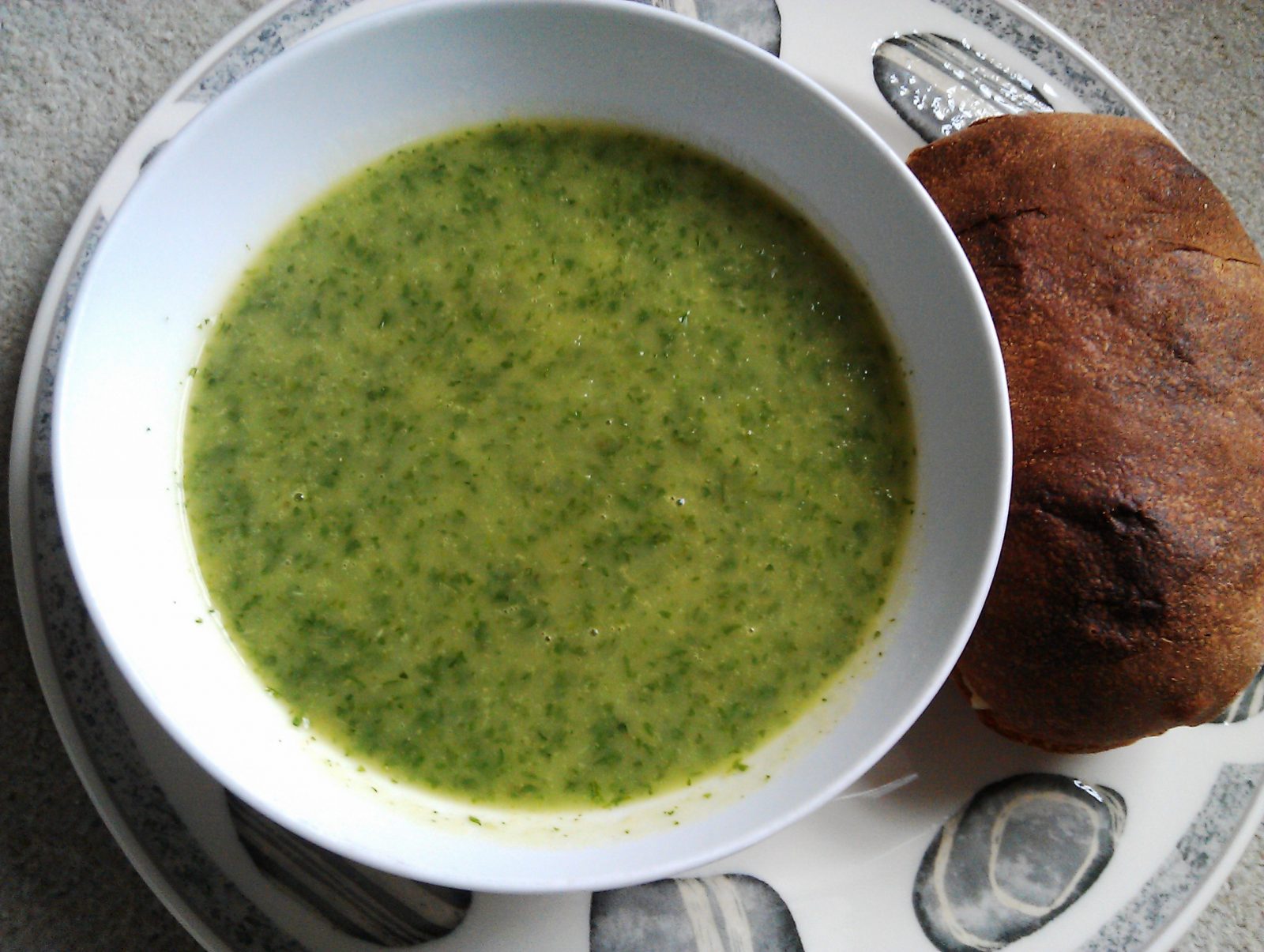
You will need a lot of parsley for this delicious deep green soup, so don’t be put off by the quantity. If you haven’t got quite enough parsley, add some baby spinach, chard or spring cabbage leaves at the final blanching stage before you purée it. Take care not to overcook the parsley so the flavour remains fresh.
Serves: 4-6
Preparation/cooking time: 30-35 minutes
Ingredients
2 medium onions, finely chopped
1 garlic clove, chopped
2 tbsp olive oil and/or butter
1 large bunch (125-150g) parsley, washed
750ml chicken or vegetable stock
300g potatoes, peeled and chopped
salt, pepper and a squeeze of lemon juice
Method
Start by cutting off the parsley stalks and chopping them roughly. Heat the oil or butter gently in a large pan and tip in the onion and parsley stalks. Soften on a low heat for about 10 minutes without browning, then add the garlic and potato and stir for a minute or so. Pour in the stock and simmer for 10-15 minutes or until potato just cooked.
Meanwhile, divide the parsley into two. Roughly chop one half and put it to one side. Once the potato is cooked, add the chopped parsley and cook for just one minute longer. Take off the heat immediately and pour the soup into a large bowl to stop it cooking any further.
Blanch the remaining parsley – pour boiling water over it, leave it for barely 30 seconds, then put it into a sieve and cool under the cold tap. Add the blanched parsley to the soup then blend it to a smooth purée.
Pour the soup back into the saucepan, add a squeeze of lemon, check the seasoning and reheat it gently. If you like a creamier texture, swirl in some cream or crême fraiche before serving.
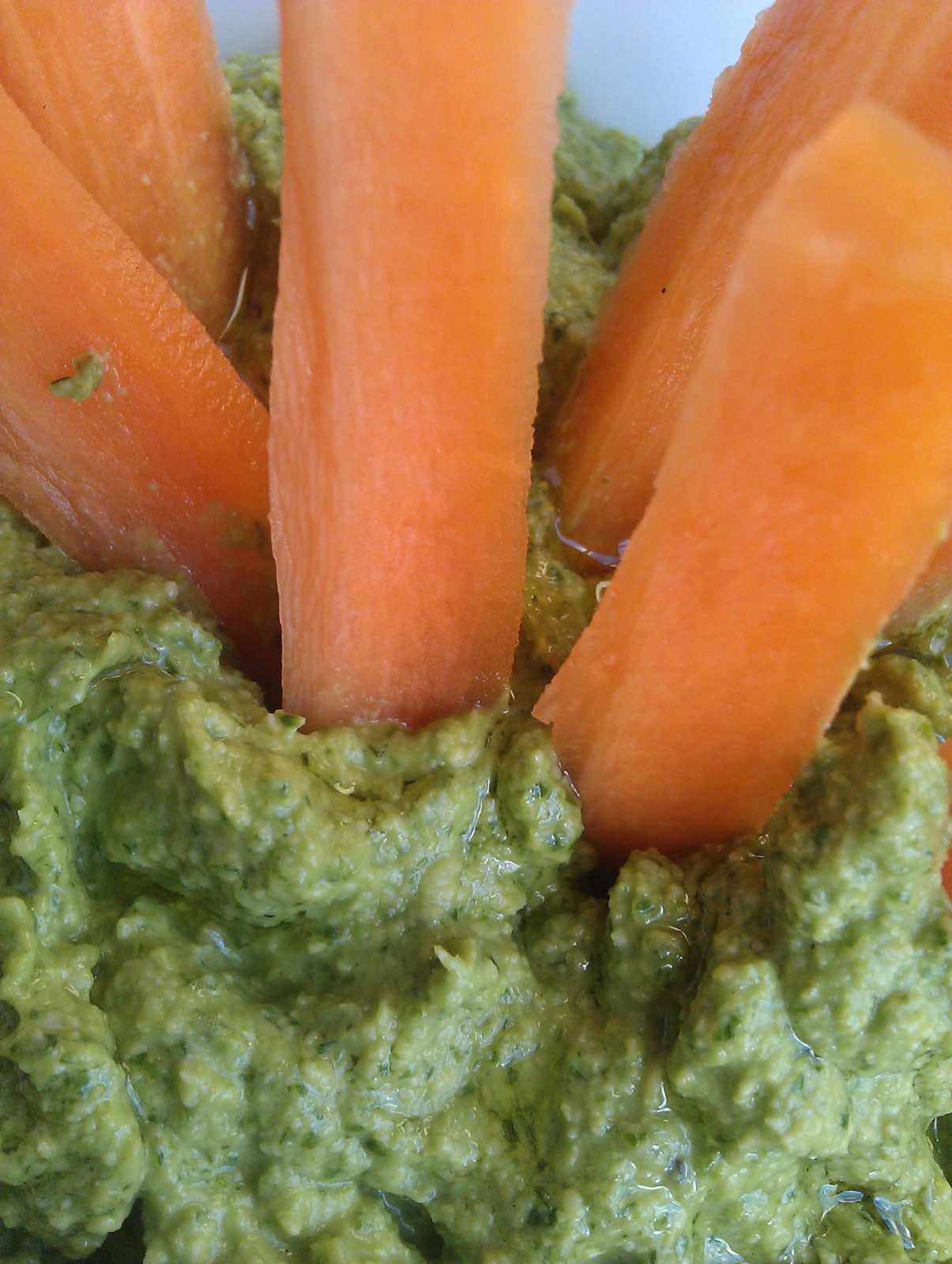
Just made this – it’s seriously GOOD! Thanks to sisters Hemsley & Hemsley (via Guardian Cook).
H & H say: “This delicious dip is great with plenty of fresh, raw vegetables…You can also thin it out with extra oil and lemon juice, drizzle it over baked fish and roast chicken, or toss it through salads.”
Serves 4
Preparation time: 10 minutes
No cooking!
Ingredients
80g raw cashews
100ml extra virgin olive oil, plus extra for drizzling
2 large handfuls of fresh parsley leaves, approx 45g
1 medium garlic clove
1 tbsp fresh lemon juice
4 tbsp water
¼ tsp sea salt
¼ tsp ground black pepper
Method
Blend all the ingredients together and serve in a bowl with a drizzle of extra virgin olive oil on top. EASY!
- Parsley’s not just for scattering on a finished dish – parsley recipes from Hugh Fearnley-Whittingstall
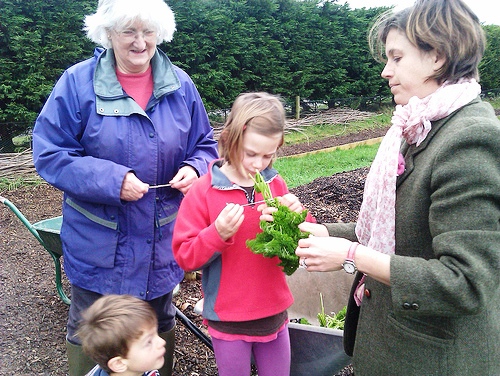
Definitely no apologies for yet another soup recipe – it is that time of year after all.
This one from Nigel Slater uses the potatoes, garlic and parsley in Camel CSA’s weekly veg boxes. The addition of chestnut mushrooms, fried in a little butter then tossed in garlic and parsley, makes it a winner.
Slater suggests in his Observer column having this soup alongside a crisp winter salad dressed with gherkins and mustard. I’m with him all the way.
Delicious with some real bread from St Kew Harvest Farm Shop.
Serves: 4
Preparation: 20 minutes
Cooking time: 20 minutes
Ingredients
For the soup:
750g floury potatoes
2 cloves of garlic
a large rib of celery
2 bay leaves
8 stems of flat-leaf or curled parsley
For the mushrooms:
150g small, chestnut mushrooms
2 tbsp butter
2 cloves of garlic
2 or 3 bushy sprigs of parsley
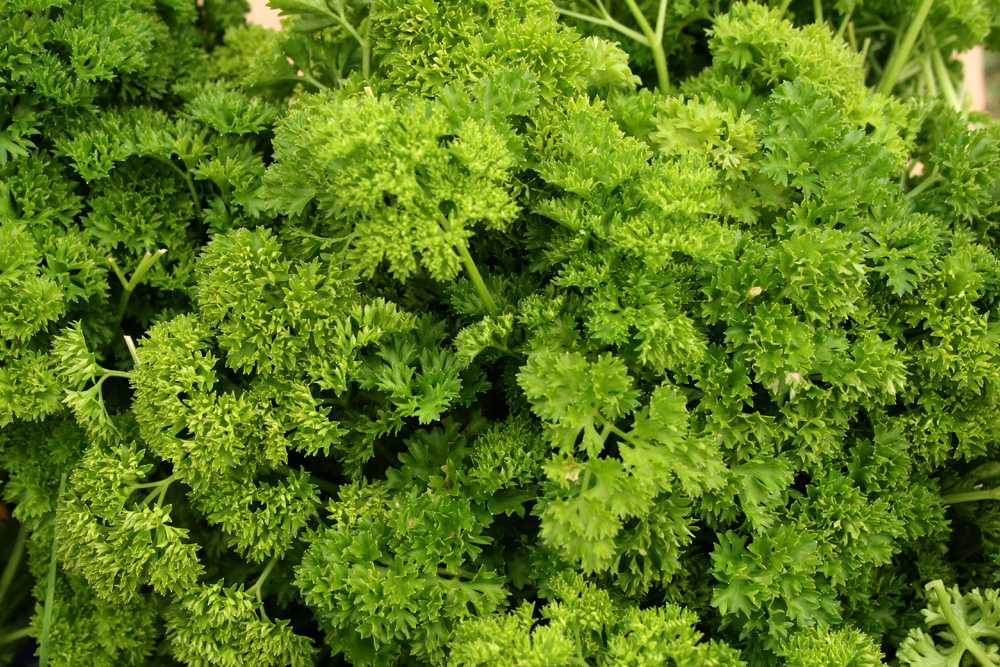
Method
Peel the potatoes, dice them, then put them into a saucepan. Peel and chop the garlic, roughly chop the celery, then add them to the potatoes and pour in enough water to cover. Drop in the bay leaves. Remove the parsley leaves and set aside.
Add the stalks to the pan with half a teaspoon of salt. Bring to the boil, then turn down to a lively simmer and cook for 15 or 20 minutes until the potatoes are soft and on the verge of collapse.
Chop the parsley leaves. Pour the potatoes and their cooking water into a blender or food processor, add the parsley leaves and blitz till smooth. Take care not to over-blend as it can send the mixture gluey – do it in short bursts. Check the seasoning, adding salt and pepper as you think fit.
Cut the mushrooms into thick slices, melt the butter in a shallow pan, add the peeled and crushed garlic, then the mushrooms and cook them till nicely coloured and sizzling. Season. Chop the parsley leaves and stir into the mushrooms.
Warm the soup thoroughly – until piping hot – then ladle into four bowls. Divide the mushrooms between the bowls and serve.
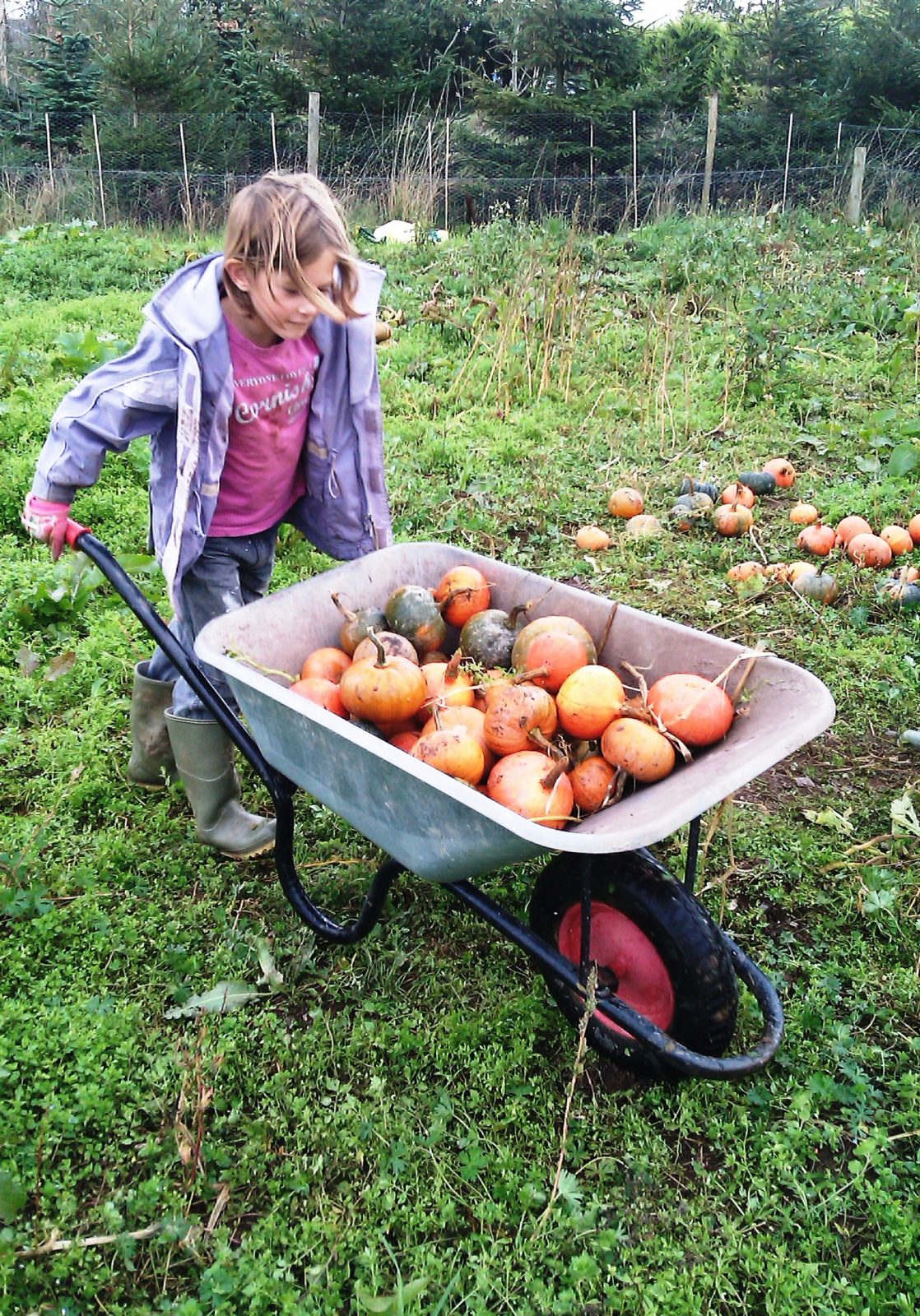
This warming, spicy soup is a great antidote to rich, Christmas food. It’s an adaptation of a couple of classic recipes, using the squash or pumpkin as well as chillies, carrots, onions, garlic and parsley from this week’s Christmas vegetable boxes.
Serves: 4
Preparation: 20 mins
Cooking time: 35 mins
Ingredients
750g squash or pumpkin, peeled, deseeded and diced
2 tbsp olive oil
2 tsp ground cumin
1 tbsp ground coriander
1 fresh red or green chilli, deseeded and finely chopped
2 onions, peeled and chopped
2 carrots peeled and chopped
1 garlic clove, peeled and finely chopped
1.25 litres vegetable or chicken stock
Lemon juice
Flat-leaf parsley or chopped chives
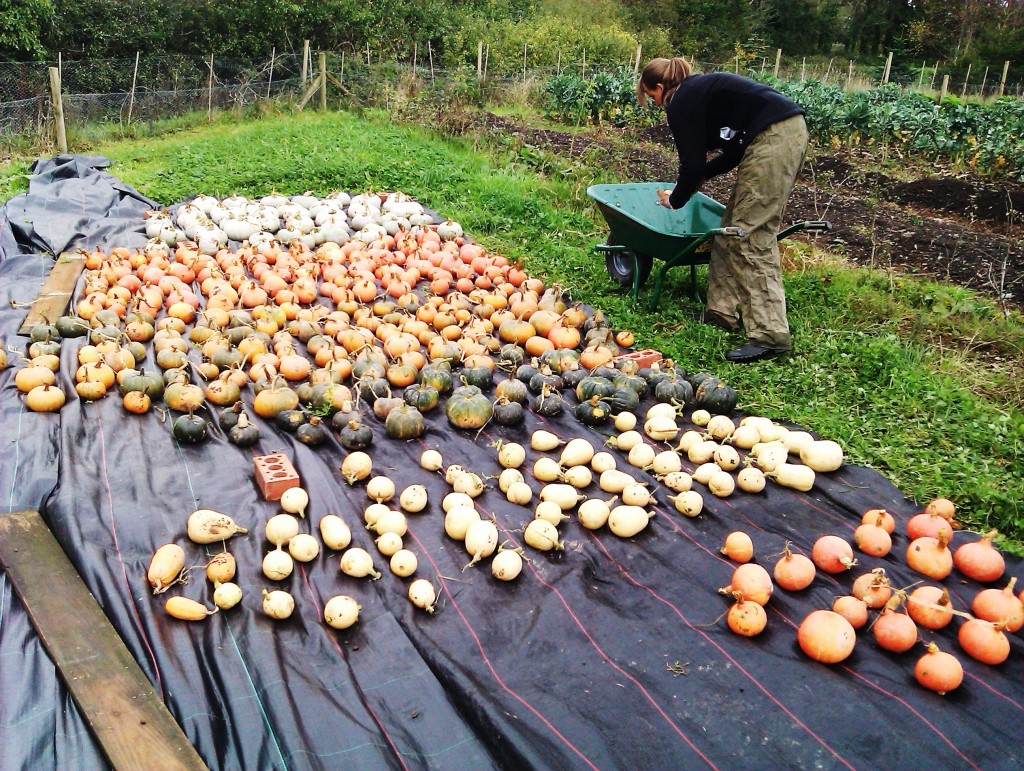
Method
Preheat the oven to 180°c/gas 4.
Peel the squash or pumpkin, remove the stringy bits and seeds and discard them. Chop it into cubes and put in a roasting tray mixed with 1 tbsp of the olive oil, the garlic and the spices. Cook in the oven for 20 to 25 minutes, until soft and brown at the edges.
Place a pan on a medium heat with the remaining olive oil. Add the carrot, onion, celery and chilli and sweat until softened but not coloured. Then mix in the roasted squash or pumpkin and the stock.
Bring to the boil, then simmer for about 10 minutes until all the vegetables are soft and cooked through.
Blitz with a hand blender or in a food processor until smooth. Taste and season with salt, pepper and a squeeze of lemon juice, then sprinkle with some chopped parsley or chives.
Serve with a swirl of creme fraiche and a scattering of toasted pumpkin seeds or crispy bacon pieces.
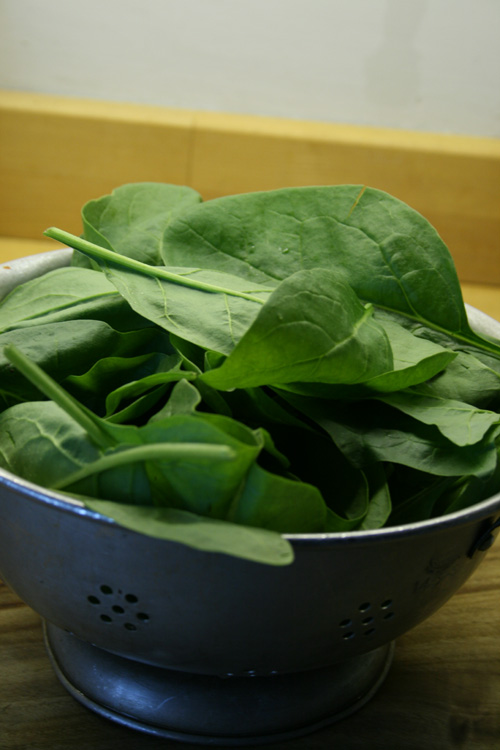
Another recipe from Annie Bell’s Evergreen. She makes homemade pasta but bought is fine. It’s tossed with some herbs and baby spinach leaves while still hot, and the salad is served warm.
Serves 4
Preparation and cooking: 15 minutes
Ingredients
300g papardelle, fettucine or other flat ribbon pasta
Dressing
½ tbsp red wine vinegar
salt, pepper
4 tbsp extra virgin olive oil
4 tbsp groundnut oil
Salad
55g baby spinach
2 level tbsp chives, snipped 2cm long
½ level tbsp tarragon leaves
½ tbsp basil, torn
1 level tbsp flat-leaf parsley leaves
Method
Bring a large pan of water to the boil, add a shot of oil and then the pasta. Cook till al dente, depending on which size pasta you’re using. Meanwhile whisk the vinegar with the seasoning. Add the oils.
When the pasta is cooked, drain and toss with the dressing, adding all the leaves and herbs at the last minute. Adjust the seasoning and serve immediately.
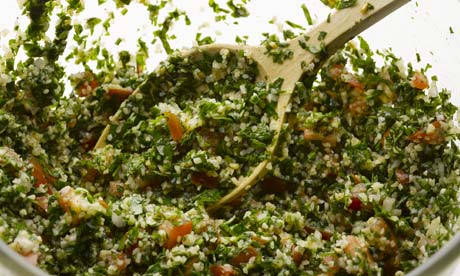
Bulgar wheat salad has an earthy taste and uses an abundance of parsley, which features in Camel Community Supported Agriculture’s veg boxes this week. This well-tried version of tabbouleh comes from Claudia Roden’s classic A Book of Middle Eastern Food.
Soaking time: 30 minutes
Preparation time: about 15 minutes
Serves 6
Ingredients
250g fine bulgar wheat
3 tablespoons finely chopped spring onions
Salt and black pepper
About one and a half teacups finely chopped flat-leaved parsley
3 tablespoons finely chopped fresh mint
4 tablespoons olive oil
4 tablespoons lemon juice
Cooked vine leaves, raw lettuce or tender cabbage leaves (to serve)
Method
Soak the bulgar wheat in water for about half an hour before preparing the salad. It will expand enormously. Drain and squeeze out as much moisture as possible with your hands. Spread out to dry further on a cloth.
Mix the bulgar wheat with the chopped onions, squeezing with your hands to crush the onions so that their juices penetrate the wheat. Season to taste with salt and pepper. Add the parsley, mint, olive oil and lemon juice, and mix well. Taste to see if more salt, pepper or lemon are required. The salad should be distinctly lemony.
Tabbouleh is traditionally served in individual plates lined with boiled vine leaves, or raw lettuce or cabbage leaves. People scoop the salad up with more leaves, served in a separate bowl beside it.
Notes
Claudia Roden adds: “As with most dishes, the preparation is highly individual. Quantities of ingredients vary with every family, but parsley is always used abundantly. This is a great Lebanese favourite.” More about Claudia Roden.
Compare her relaxed approach to Yotam Ottolenghi, chef/patron at Ottolenghi in London. He insists there’s a right way and a wrong way to make this refreshing summer salad. Click here to find out what he claims is the right way to do it.
Click here to see all the recipes that Camel CSA members have recommended so far.


